How Big Should a Chicken Coop Be? Sizing Guide for Your Flock
- January 31, 2024
- 1 comment
When I embarked on my backyard chicken-keeping adventure, one question loomed larger than all the rest: how big should my chicken coop be? It’s a deceptively simple question that touches on the well-being of your feathered friends, the efficiency of egg production, and, of course, the practicalities of your own backyard space. After diving deep into research and consulting with seasoned poultry keepers, I’ve come to appreciate that the answer is as nuanced as the birds themselves.
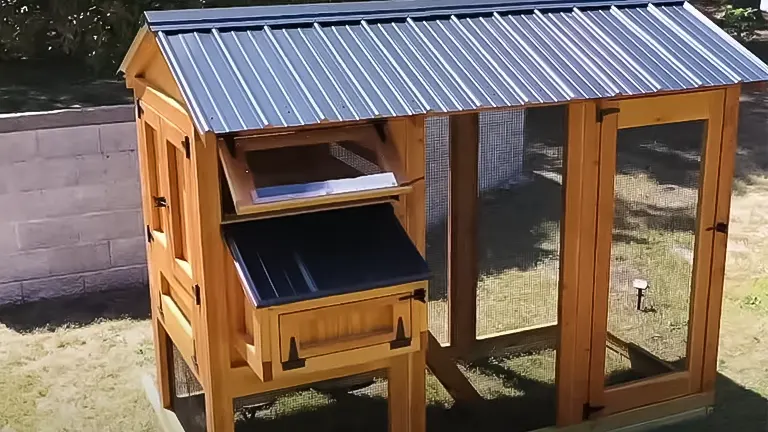
The gravest error a novice chicken keeper can make? Failing to provide ample space for their flock. Underestimating the importance of space can lead to unhappy and unhealthy chickens, impacting their overall well-being and productivity.
But fear not! This article is designed to equip you with all the necessary information to make an informed decision. Ensuring the happiness and health of your chickens starts with understanding and providing the right amount of space. Let’s delve into the nuances of chicken coop sizing and how it affects your feathered friends, ensuring you start off on the right foot in your chicken-keeping endeavors.
List on How Big Should A Chicken Coop Be:
- Space Considerations for Chicken Coops
- The Significance of Ventilation and Light
- Nesting Boxes and Roosting Bars
- Protection from Predators
What’s the ideal size for a chicken coop?
The space requirement ranges from 2.5 to 4 square feet per chicken if they have access to a large run, and increases to 5 to 10 square feet per chicken for those with a smaller run.
The truth is, there’s no universal answer to how much space each chicken needs within a coop, as numerous variables play a role in determining the perfect dimensions. However, you needn’t worry. This guide is crafted to assist you in navigating these factors, ensuring you find the optimal setup for both you and your feathered companions.
The Importance of Space in the Chicken Coop
Chickens require space within their coop for several vital reasons:
- To engage in their instinctual behaviors.
- To maintain a sense of personal space.
- To avoid conflict and aggression.
Understanding Chickens’ Natural Behaviors in the Coop
Chickens exhibit a variety of natural behaviors that need to be accommodated in their living space, including:
- Ambulating and exploring.
- Resting and relaxing.
- Flapping and stretching their wings.
- Scratching at the ground or bedding.
- Eating and drinking (though providing water and feed inside the coop is optional).
- Roosting during the night.
- Laying eggs in nesting areas.
- Eliminating waste.
While the physical space required for these activities might not seem extensive, chickens, from a psychological standpoint, greatly benefit from having ample room. They thrive in environments where they can freely move, stretch, and engage in their natural behaviors without restraint.
Further discussions will delve into the specific space requirements for activities such as eating, drinking, roosting, nesting, and eliminating waste, highlighting the importance of adequate space for the overall well-being of your chickens.
The 10 Factors that Determine How Big Should A Chicken Coop Be
Factors #1: Space Considerations for Chicken Coops
When it comes to designing a chicken coop, adhering to space recommendations is crucial for the well-being of your poultry. The general guideline suggests allocating at least 3 to 4 square feet of interior coop space for each bird if they can roam in an outdoor run, and expanding this to 10 square feet per bird for those restricted to living inside the coop all the time.
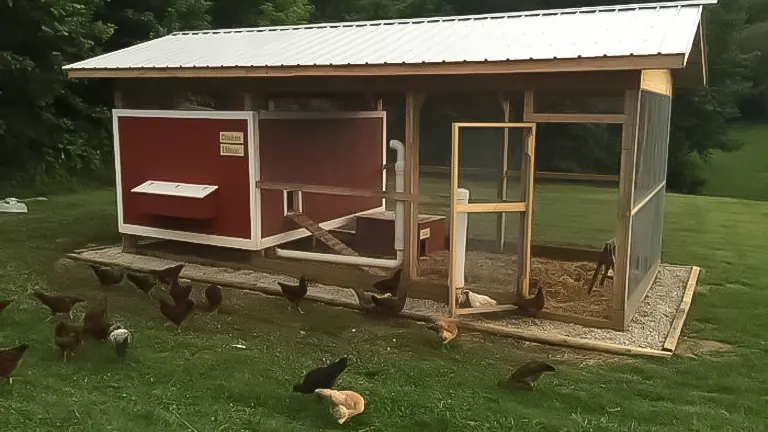
In my experience, with a coop that provides 24 square feet for six hens, I am meeting the bare minimum required for their comfort and mobility. However, it became evident early on that offering additional space significantly enhances the chickens’ quality of life. More room not only contributes to their physical health by allowing for more extensive movement and activities, but it also plays a pivotal role in their mental well-being.
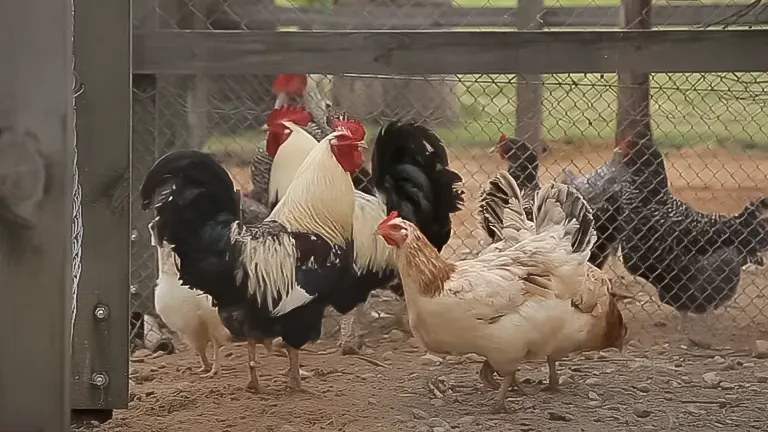
A spacious environment minimizes stress, reducing common behavioral problems such as aggression, pecking, and bullying among the flock. Thus, when planning a coop, giving your chickens as much space as your circumstances allow can lead to a more harmonious and healthy chicken community.
Factors #2: The Significance of Ventilation and Light
In the realm of chicken coop construction, the aspects of ventilation and lighting hold paramount importance. In my coop, the inclusion of windows plays a dual role: they flood the interior with natural light, essential for the well-being of the chickens, and also serve as a source of ventilation when opened.
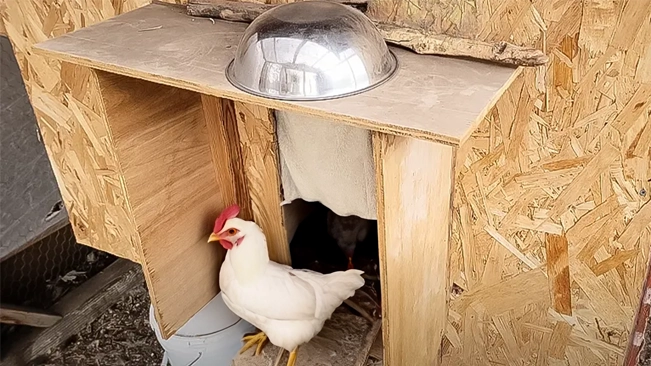
This ventilation is crucial as it significantly diminishes the likelihood of respiratory problems among the chickens by ensuring a continuous exchange of air, thereby maintaining a fresh and healthy environment within the coop.
Moreover, the presence of natural light not only influences the physical health of the chickens but is also instrumental in optimizing their egg-laying potential. Natural light regulates the birds’ biological rhythms, which in turn impacts their egg production cycles.

Therefore, the careful consideration of ventilation and light in a chicken coop’s design is not just a matter of comfort, but a critical component that directly influences the health, happiness, and productivity of the chickens. Integrating adequate windows and ensuring proper airflow can markedly enhance the quality of life for your feathered friends and the efficiency of their egg production.
Factors #3: Nesting Boxes and Roosting Bars
In any chicken coop, the inclusion and arrangement of nesting boxes and roosting bars are essential for the well-being of the chickens. The general rule I follow is to have one nesting box for every three hens, ensuring each bird has adequate access to these private spaces for laying eggs.
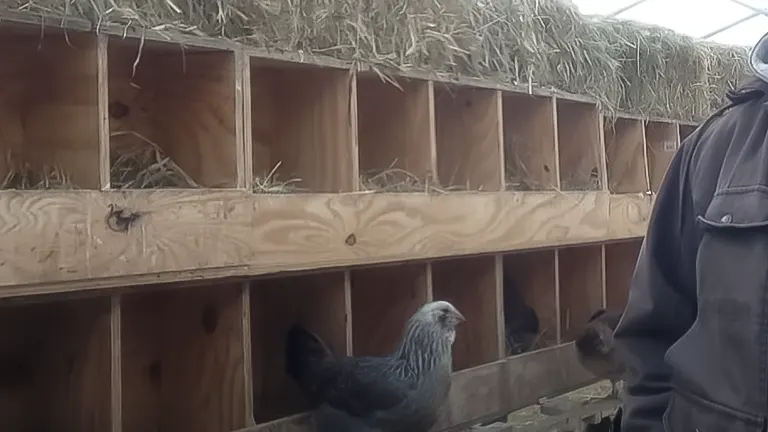
In my personal coop setup, I’ve installed four nesting boxes, which has been more than sufficient for my six hens, providing them with comfort and privacy. Additionally, the arrangement of roosting bars is of equal importance.
I have positioned these bars at various heights within the coop, which not only optimizes the use of vertical space but also respects the natural pecking order among the chickens.
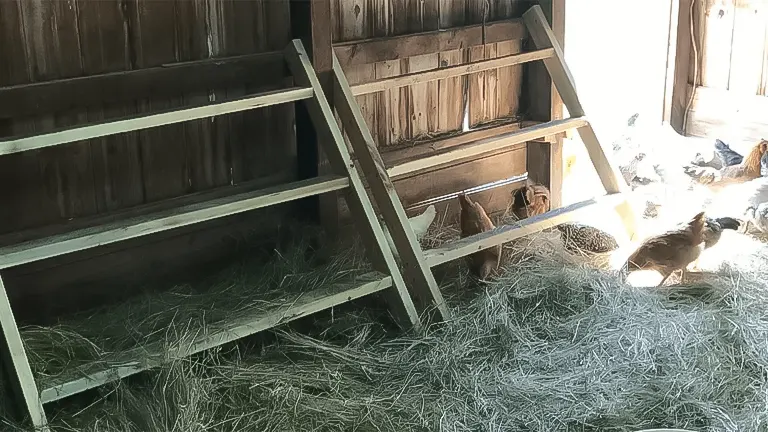
This hierarchical system is crucial in a flock, and by providing roosting bars at different levels, each chicken can roost at a height that corresponds to its position in the group hierarchy, ensuring a peaceful coexistence and minimizing conflicts when they settle down for the night.
Factors #4: Protection from Predators
When it comes to coop design, ensuring the safety of the chickens from predators is an absolute must. In building my coop, I prioritized security by using hardware cloth instead of the more traditional chicken wire. Hardware cloth is significantly more durable and effective at keeping predators at bay, a lesson I learned through experience.
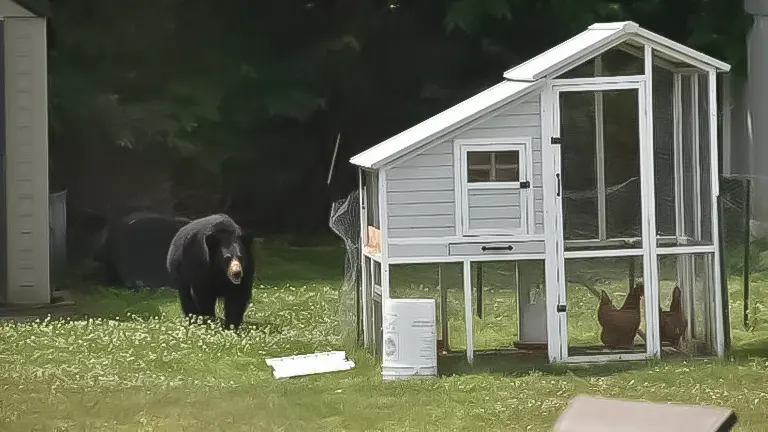
The door of the coop is also secured with locks that are designed to be predator-proof, a critical feature after discovering that raccoons, in particular, are surprisingly skilled at opening simple latches. Furthermore, I’ve taken additional measures to reinforce the base of the coop, ensuring that it remains impenetrable.
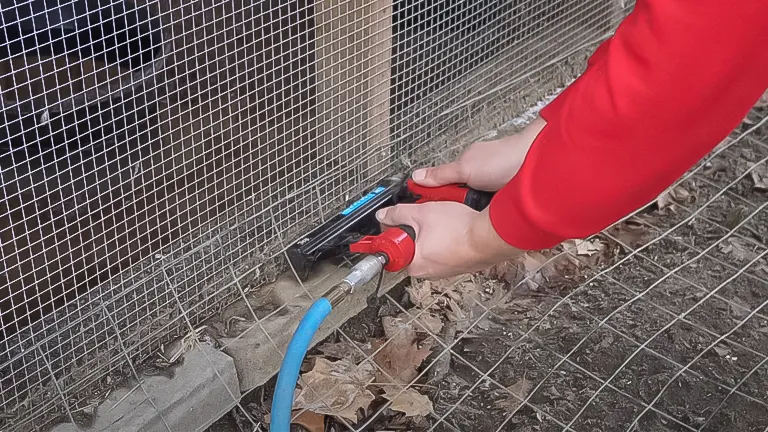
These steps are vital for the protection of the flock, as they prevent any potential intrusion by predators, thereby safeguarding the chickens’ safety and well-being throughout the night. This level of security gives me peace of mind, knowing that my chickens are secure from the various threats that nocturnal predators pose.
Pros and Cons: A Personal Reflection
The journey to finding the perfect coop size and design was fraught with trial and error, but it was immensely rewarding. Here are some key takeaways from my experience:
Pros
- Adequate space promotes healthy, stress-free chickens.
- Good ventilation and light enhance egg production.
- Proper design and security measures protect against predators.
Cons
- Larger coops require more maintenance and cleaning.
- Initial costs can be high, especially with added security features.
- It can be challenging to find the balance between space and over-crowding in smaller yards.
Making Your Decision Variables
Choosing the right chicken coop size and design is a balancing act between your chickens’ needs, your backyard’s capacity, and your budget. For those just starting, I recommend opting for slightly more space than you think you’ll need. This gives you flexibility to expand your flock and ensures your chickens have a comfortable, enriching environment.
From my experience, the key decision-making factors are space, security, and environmental control (ventilation and light). While the initial setup can be costly and time-consuming, the payoff in healthy chickens and fresh eggs is immeasurable. For me, creating a coop that mimics the spaciousness and security of a natural habitat, while fitting aesthetically and practically into my backyard, has been the cornerstone of my chicken-keeping success.
Related Articles:
- Best Bedding For Chickens
- Best Safe Chicken Coop Heater
- 8×8 Chicken Coop Plans
- Turning a Shed Into a Chicken Coop
- How to Make a Chicken Coop Out of Pallets
- Best Sand for Chicken Coop
- How To Insulate a Chicken Coop
- How To Heat a Chicken Coop
- How To Keep Water from Freezing in Chicken Coop
- How to Build a Chicken Coop
- How To Build Chicken Nesting Boxes
Final Thoughts
In conclusion, determining the ideal size for a chicken coop is a nuanced decision that significantly impacts the health and happiness of your chickens. While the basic guidelines suggest 3-4 square feet per chicken with outdoor access and 10 square feet for those confined inside, I’ve found that providing more space than the minimum can greatly enhance your flock’s well-being. Ample space reduces stress and behavioral issues, while also allowing for natural behaviors and comfortable living conditions.
The key is to balance the space requirements with your available area and resources. Remember, a spacious, well-designed coop leads to healthier, more productive chickens, making your chicken-keeping journey both rewarding and fulfilling. Whether you’re a seasoned poultry farmer or a newcomer to backyard chicken keeping, always prioritize the comfort and safety of your chickens in your coop design.
Frequently Asked Questions
- What is the minimum space requirement per chicken in a coop?
The general rule is to provide 3-4 square feet per chicken if they have outdoor access, and 10 square feet if they are primarily confined to the coop. - Do larger breeds of chickens require more space?
Yes, larger breeds typically need more space than smaller breeds. It’s advisable to increase the space per chicken accordingly. - How does the space requirement change if I don’t have an outdoor run?
Without an outdoor run, chickens should have at least 10 square feet each inside the coop to ensure enough room for all activities and exercise. - Is there a recommended size for the outdoor run?
A good standard is to provide at least 8-10 square feet per chicken in the outdoor run. - How many nesting boxes do I need in my coop?
You should aim for one nesting box for every three to four hens. - Does the height of the coop matter?
Yes, the height is important, especially for placing roosting bars. A height of 6-8 feet is typical to provide adequate space for roosting and air circulation. - What if I can only afford a small coop?
If space is limited, focus on maximizing what you have by efficient interior design, and consider a smaller number of chickens. - How important is ventilation in a chicken coop?
Ventilation is crucial for healthy air quality and preventing respiratory issues in chickens, regardless of coop size. - Can I expand my coop size later?
Yes, many chicken keepers expand their coops as their flock grows, just ensure that the extension also meets the space and safety requirements. - What are the risks of having a coop that’s too small?
A cramped coop can lead to stress, aggression, and health problems in chickens, such as feather pecking and a decrease in egg production.
We’re eager to hear from you! Share your personal experiences and insights about chicken coop sizes in the comments section below. Your stories and advice on how big a chicken coop should be could greatly assist fellow enthusiasts and beginners in making well-informed decisions for their feathered friends. Whether it’s tips, challenges, or success stories, your contributions are invaluable to our community of chicken keepers!

Edward Smith
Forestry AuthorWoodworking is about more than crafting; it's a harmonious connection with nature, mastering tools, and preserving our environment. I'm here to share my knowledge and experiences with you, forging a future where we can embrace wood's beauty and utility while safeguarding our forests' health and diversity.









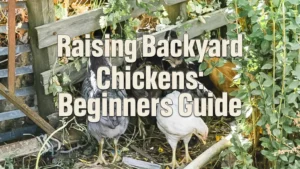
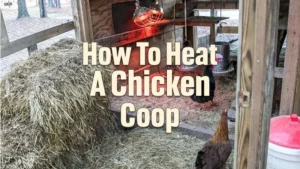

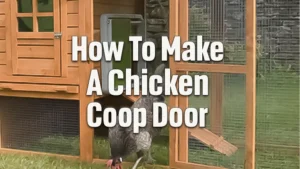
Very eduvative for a first time beginner in poutry rearing
Rudolph Nyikuli
February 1, 2024 12:29 pm